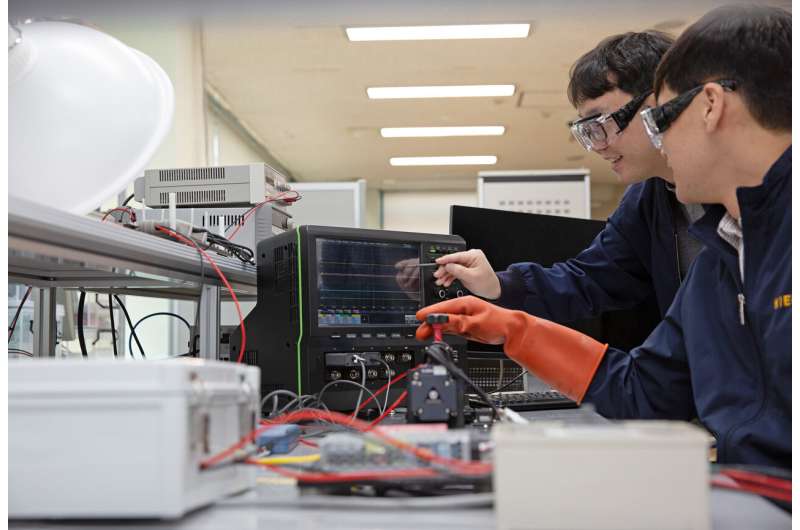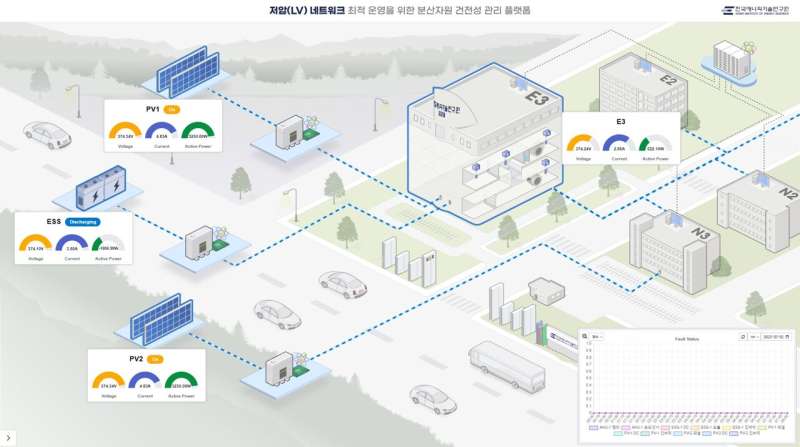
The research team led by Dr. Jeong Hak-geun at the Energy ICT Research Department of the Korea Institute of Energy Research (KIER) has developed a building energy management platform technology that transforms buildings from being the main consumers of energy into entities that produce, manage, and save energy.
Buildings exhibit varying levels of energy consumption depending on their use, location, and the characteristics of their users, even down to different floors and zones within the same building.
In light of initiatives such as carbon neutrality and RE100, many buildings are now implementing renewable energy solutions like solar panels, fuel cells, and energy storage systems. Furthermore, as the usage of high-end electrical appliances continues to grow, it has become crucial to manage building energy for efficient consumption effectively.
Existing Building Energy Management System (BEMS) technologies primarily rely on simple monitoring of energy usage and the experience of building managers to operate the system. This approach makes it difficult to efficiently manage the increasingly diverse distributed resources within buildings and various types of power consumption. Moreover, it limits real-time status diagnostics of distributed resources for addressing malfunctions.

To overcome these limitations, the research team developed a platform technology that utilizes artificial intelligence and probabilistic/statistical methods to manage the real-time malfunctions and operating status of distributed resources (such as solar power generation, energy storage systems, HVAC systems, inverters, etc.) within buildings.
This technology automates the analysis of operating conditions and fault diagnosis, as well as the optimization of resource operation in real time, thereby enhancing efficiency and reducing energy costs.
The research team collected various types of fault data and environmental data, which were then modeled and analyzed. By applying artificial intelligence and probabilistic/statistical methods learned from this process, they achieved a fault detection accuracy of over 98% for distributed resources. Not only that, but the platform also incorporates next-generation secure communication technologies using quantum cryptography and quantum-resistant cryptography, enabling it to withstand cyber attacks with robustness at security level 5.
Autonomous operation technology has also been applied to respond to and recover from various faults that can occur in distributed resources. The researchers have developed autonomous operation technology with a nonlinear optimization algorithm. This algorithm optimizes operations among distributed resources in real-time, making it possible to immediately derive and operate the optimal utilization plan for distributed resources when a fault occurs.
The research team, after a year of verification in a mock-up testbed that precisely simulates a real building environment, confirmed that the platform technology they developed resulted in more than 17% energy cost savings compared to existing building energy management systems.
Moreover, through this research, they produced significant results, including 50 SCI(E)-level papers, 27 domestic and international patent applications with 4 registrations, and 8 cases of technology transfer, proving the excellence of the research outcomes. They are currently on the verge of commercialization.
Dr. Jeong Hak-geun, the lead researcher, stated, “The developed platform is equipped with sophisticated algorithms for improving utilization efficiency and can flexibly apply to various buildings such as offices, factories, and hotels by managing the fault status of distributed resources in real-time. It is a market-leading technology that can significantly reduce energy loss and maintenance costs, contributing to carbon neutrality.”
Citation: Building energy management platform uses AI and statistical methods to optimize operations (2024, March 26) retrieved 26 March 2024 from https://techxplore.com/news/2024-03-energy-platform-ai-statistical-methods.html
This document is subject to copyright. Apart from any fair dealing for the purpose of private study or research, no part may be reproduced without the written permission. The content is provided for information purposes only.


